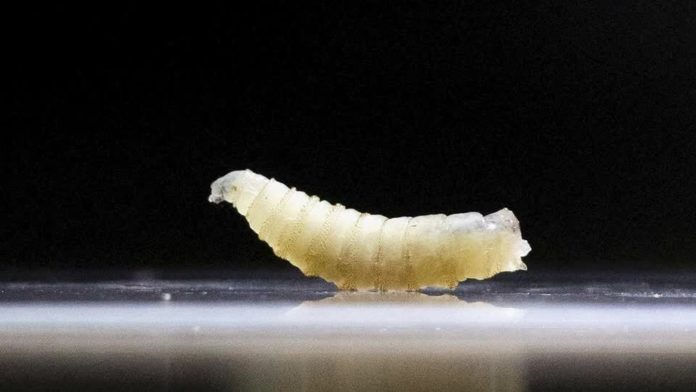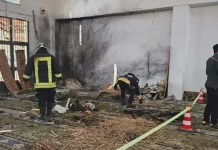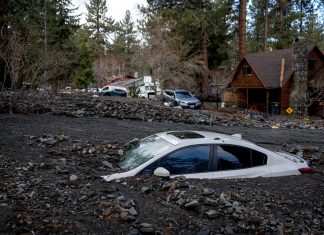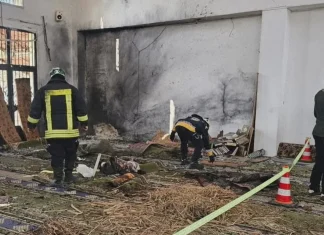A Silent Menace: The New World Screwworm Lands in the US—And Why It Matters to Everyone
The arrival of an uninvited and gruesome guest has sent ripples of concern far beyond Maryland, casting a shadow over the vast ranchlands of America’s beef country and challenging our fragile trust in how information about infectious threats is shared. This is the story of a parasite—small, almost invisible to the naked eye—that can consume flesh and potentially dismantle economies: the New World screwworm.
When Flesh-Eating Parasites Cross Borders
On August 4th, the Centers for Disease Control and Prevention confirmed what many feared but few expected—a human case of the notorious New World screwworm in the United States. The patient, a Maryland resident who had recently traveled abroad, was found to be infected with larvae of this flesh-eating fly, a parasite whose female lays eggs inside wounds on any warm-blooded animal.
What makes this more than a simple medical curiosity is the fact that this case marks the first recorded instance of travel-associated human screwworm infestation on American soil. Luckily, the individual has since recovered, and officials affirm that there is no sign of transmission to others, whether humans or animals. The Maryland Department of Health remained tight-lipped on details about the travel destination and timeline.
Yet, beneath this cautious confidence lurks a tension that is far from resolved.
Understanding the Screwworm Threat
Imagine a fly so insidious that it can devastate not just individuals, but entire livestock industries. The New World screwworm (Cochliomyia hominivorax) is infamous for its larvae feeding voraciously on living tissue—earning it a reputation as a flesh-eating menace. This parasite has been eradicated in the US for decades through aggressive programs, but its slow northward march from Central America and Mexico has set off alarms.
In practical terms, a full-blown screwworm outbreak in the U.S., especially in Texas where cattle ranching thrives, could wreak economic havoc. Experts estimate losses could escalate to $1.8 billion—threatening the livelihoods of ranchers, the stability of food supply chains, and the price of meat worldwide.
“This is a nightmare scenario for agriculture,” says Dr. Ana Martínez, a veterinary parasitologist who has studied screwworm biology extensively. “Once this parasite establishes itself, the damage can spiral quickly. It’s not just about economics; it’s animal welfare, public health, and our interconnected food system.”
Transparency and Trust: A Clash with Public Sentiment
But the screwworm story in Maryland is about more than just biology and economics—it’s a lesson about communication, trust, and transparency amidst a potential health and agricultural crisis. Reuters’ investigative reporting brought the first public attention to the case, revealing that the U.S. government had known about the infection weeks prior yet had delayed public disclosure.
Neal Wilkins, CEO of East Foundation, a conservation and cattle group, voiced frustration over this lag in communication. “It’s irresponsible and tone deaf to keep producers, wildlife managers, and the general public in the dark for nearly three weeks,” he said. “If authorities withhold information, it undermines trust and hampers coordinated efforts to prevent a larger outbreak.”
This sentiment lays bare an urgent predicament: how can farmers protect their herds, communities safeguard their health, and policymakers craft measured, effective responses without timely and transparent information?
Ranchers on Edge
In Texas, ranchers are bracing for impact. The recent tumble in U.S. cattle futures reflects not only market reactions but deep-seated fears. “We’ve been battling drought, market volatility, and now this screwworm threat?” says Miguel Alvarez, a third-generation cattle rancher from San Antonio. “It feels like we’re fighting on all fronts. Without clear information, how can we prepare?”
Alvarez recalls how the agricultural community was once blindsided by pest outbreaks—like the boll weevil that devastated cotton in the early 20th century—and warns that history could repeat if vigilance wanes. “Transparency isn’t a luxury; it’s survival.”
Global Wounds and Local Stories
The screwworm infestation story is a vivid reminder of an increasingly interconnected world where diseases and pests travel with people and goods across borders. It is rooted in a wider ecological and economic pattern—one where climate change, global trade, and human mobility shift disease geography in unpredictable ways.
Central America and Mexico are already grappling with the screwworm’s spread. This has prompted the U.S. Department of Agriculture to suspend cattle imports from Mexico as of July, aiming to stem the risk of further incursions. Yet human cases like Maryland’s reveal how porous such barriers can be.
Despite its small size, the screwworm encapsulates grander challenges:
- How do national borders stand up against microscopic ecosystems of disease?
- What systems do we need to detect and counter new biological threats promptly?
- How do we balance public reassurance with transparency without causing panic?
Voices from the Frontlines
Dr. Elena Rivera, an infectious disease specialist based in Baltimore, offers an additional layer of insight. “Infections like this are rare but not unprecedented,” she explains. “What matters now is vigilant surveillance and education—helping local doctors and communities spot signs early and report them.”
Meanwhile, local Maryland residents express mixed emotions—from concern to cautious relief. “Hearing about a parasite that eats flesh sounds like something out of a horror movie,” says Joshua Bennett, a schoolteacher in Annapolis. “But knowing the patient recovered and no one else was infected, I feel reassured… though I do want clear updates.”
A Call to Reflection for Global Readers
What do we make of this unsettling episode? It’s an opportunity to pause and reflect on how our modern world handles unseen threats. Whether it’s a parasite in a traveler or a virus on a plane, these events compel us to rethink our systems of detection, communication, and cooperation. How connected are we, really? And how prepared are we to act swiftly when nature’s age-old adversaries resurface in new guises?
The New World screwworm may seem like a tiny foe, but its invasion speaks to broader narratives of ecological imbalance, public health, and the power of information. For ranchers, public health officials, and the everyday citizen alike, its story is a stark reminder: vigilance, transparency, and global solidarity are the best defenses we have against the silent threats lurking just beneath the surface.
So the next time you bite into a juicy steak, or hear about a traveler returning from afar, consider the microscopic journeys unfolding around us—complex, intertwined, and urgent. How might your community respond if the screwworm—or its kin—came knocking at your door?










